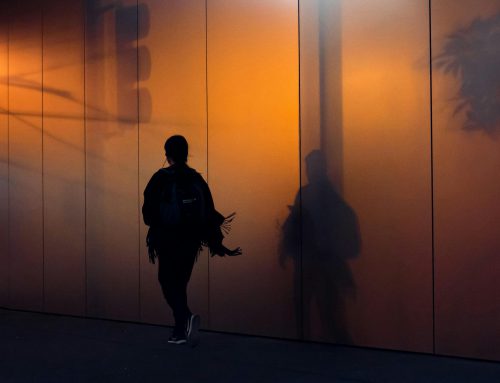Hiring is one of the most high-stakes decisions an organisation makes, and yet, it can feel like you’re rolling the dice. You sift through assessment results, scan resumes, conduct interviews, and build shortlists, hoping to find the perfect match. But even with diligent processes, you may still end up with a hire that doesn’t match your organisation’s needs.
Sometimes it’s a bright, enthusiastic new hire who simply doesn’t gel with the company’s culture. Other times, it’s a technically capable employee whose skills don’t quite fit the demands of the role, requiring costly development interventions to bridge the gap. In more serious cases, it’s someone whose presence disrupts team dynamics, dampens morale, or introduces toxicity into the workplace. These scenarios may look different on the surface, but they share a common thread: the hire isn’t working out, and the organisation is paying the price.
And it’s not just anecdotal. In a study of over 20,000 new hires and 1,400 HR executives, Leadership IQ found that 46% of new hires fail within the first 18 months. Among executives, the numbers are even greater. The Harvard Business Review reports that 50 to 60% of leaders struggle or fail after being promoted or hired within that same window.
So why does this happen, and what can organisations do to prevent it? In this article, we’ll explore why hiring missteps are so common and unpack their hidden costs.
Hiring Pitfalls
Not all hiring mistakes stem from poor judgment or bad luck.
Often, they’re the result of systemic issues, hidden traps embedded in the hiring process that even well-intentioned teams can fall into. These hiring pitfalls are concealed beneath the surface of formal procedures like assessments and interviews, giving the illusion of rigour while quietly enabling missteps.
In this section, we examine two of the most common pitfalls: cognitive biases and flawed hiring processes, both of which can derail decision-making despite best intentions.
Cognitive Biases
Hiring decisions are often shaped by mental shortcuts, known as heuristics, that help us make quick judgments in complex or uncertain situations, especially when time or information is limited. This often shows up in hiring decisions as “intuition” or a “gut feeling” about candidates. While these shortcuts can be useful, they also open the door to cognitive biases: systematic errors in thinking that can distort how we make decisions.
In hiring, one common bias is affinity bias, the tendency to favour candidates who appear similar to us. These are the people we “click” with in interviews, maybe they share our values, interests, background, or even political views. While this can feel like chemistry, it may actually mask a lack of fit for the role. Over time, these choices can reinforce sameness within teams, stifle innovation, and undermine efforts to build an inclusive, diverse workplace.
Another well-documented bias is the halo effect, wherein a single positive trait casts a glow over unrelated attributes. Imagine a candidate strides into the interview room with effortless charm and confident body language. Within minutes, the room is captivated and energised, as they tell compelling stories about their past successes. This initial impression can lead interviewers to infer broader competence, overlooking gaps in technical expertise or teamwork. This is the halo effect in action: one standout trait, charisma, casts a shadow over the rest of the evaluation, leading to a decision based more on feeling than fit.
The horn effect is the flip side of this bias. Here, a single negative trait, like social awkwardness, a nontraditional communication style, or nervousness, can unfairly colour the entire evaluation. Instead of seeing the candidate’s strengths, interviewers may fixate on that one perceived flaw and use it to fill in the gaps about their skillset and potential.
These examples represent just a few of the many cognitive biases that can shape hiring decisions. In reality, we’re susceptible to a wide range of implicit influences. When we rely too heavily on instinct or first impressions, we risk filtering new information through existing assumptions, reinforcing our initial judgments rather than challenging them. The result? We can misread a candidate fits the role and organisation.
Flawed Hiring Systems
The hiring method itself can be a source of missteps, especially when it allows bias to creep in.
A common pitfall is the overreliance on unstructured interviews, despite research consistently showing they are poor predictors of job performance. In these settings, conversations can easily drift into territory unrelated to work, shared interests, personality impressions, or surface-level rapport. Without a structured framework, hiring teams tend to lean on intuition, making them more vulnerable to cognitive biases. These biases can distort judgment and lead to decisions based on perceived fit rather than actual capability.
Another frequent misstep is prioritizing speed over strategy. When hiring under pressure, whether it may be due to turnover, deadlines, or growth, organisations may compromise on critical steps like thorough reference checks, team input, or deeper cultural assessments. In these moments, intuition often fills the gap, reinforcing initial impressions rather than challenging them. The urgency to hire quickly can override the discipline needed to make deliberate, evidence-based decisions, increasing the risk of misalignment.
Even when formal assessments are in place, they can be flawed. Outdated criteria, generic competency models, or irrelevant testing methods may fail to reflect the actual demands of the role or the dynamics of the team. These tools can give the illusion of rigour while missing the mark entirely. A candidate may appear qualified on paper or perform well in assessments, yet struggle in practice due to mismatches in expectations, culture, or interpersonal fit.
Together, these flaws create blind spots. Candidates who seem promising during the hiring process may falter once in role, misaligned with the team, culture or the strategic direction of the organisation.
Hiring doesn’t need to be a gamble. While there’s no perfect formula for finding the right candidate, research-informed practices can help us build more effective and reliable hiring processes. By understanding the psychological and procedural reasons behind hiring missteps, hiring teams can shift from reactive fixes to proactive, evidence-based strategies that improve outcomes and reduce risk.
Curious about how bias might be affecting your hiring processes? Let’s explore it together. Share your experience, explore tailored support, or learn more about how our research-backed services can strengthen your hiring decision-making by contacting us at enquiries@odrl.org.
In our next article, we will take a look at the costs of hiring errors. Stay tuned.
References
Carucci, R. (2017, November 13). Executives fail to execute strategy because they’re too internally focused. Harvard Business Review. https://hbr.org/2017/11/executives-fail-to-execute-strategy-because-theyre-too-internally-focused
Dana, J., Dawes, R., & Peterson, N. (2013). Belief in the unstructured interview: The persistence of an illusion. Judgment and Decision Making, 8(5), 512–520. https://doi.org/10.1017/S1930297500003612
Eldridge, S. (2025, August 18). Cognitive bias. Encyclopedia Britannica. https://www.britannica.com/science/cognitive-bias
Frye, L. (2017, May 9). The cost of a bad hire can be astronomical. SHRM. https://www.shrm.org/topics-tools/news/employee-relations/cost-bad-hire-can-astronomical
Gebreamlak, O. (2025, June 17). Affinity bias: When familiar choices kill fresh thinking. SHRM Business. https://www.shrm.org/enterprise-solutions/insights/affinity-bias-when-familiar-choices-kill-fresh-thinking
Malhotra, R. T. (2019, June 28). How to reduce personal bias when hiring. Harvard Business Review. https://hbr.org/2019/06/how-to-reduce-personal-bias-when-hiring
Murphy, M. (2011). Why new hires fail (the landmark “hiring for attitude” study updated with new data). Leadership IQ. https://www.leadershipiq.com/
Nelesen, A. (2025, March 19). The biggest hiring myth: Interviews are effective without structure. HR Magazine. https://www.hrmagazine.co.uk/content/insights/the-biggest-hiring-myth-interviews-are-effective-without-structure/
Nickerson, R. S. (1998). Confirmation bias: A ubiquitous phenomenon in many guises. Review of General Psychology, 2(2), 175–220. https://doi.org/10.1037/1089-2680.2.2.175
Shao, Y. (2023). How do the halo effect and horn effect influence the human resources managers recruitment decision in an occupation interview? [Paper presentation]. Proceedings of the International Conference on Social Psychology and Humanity Studies, 6(1), 187–195.
Tversky, A., & Kahneman, D. (1974). Judgment under uncertainty: Heuristics and biases. Science, 185(4157), 1124–1131. https://doi.org/10.1126/science.185.4157.1124






